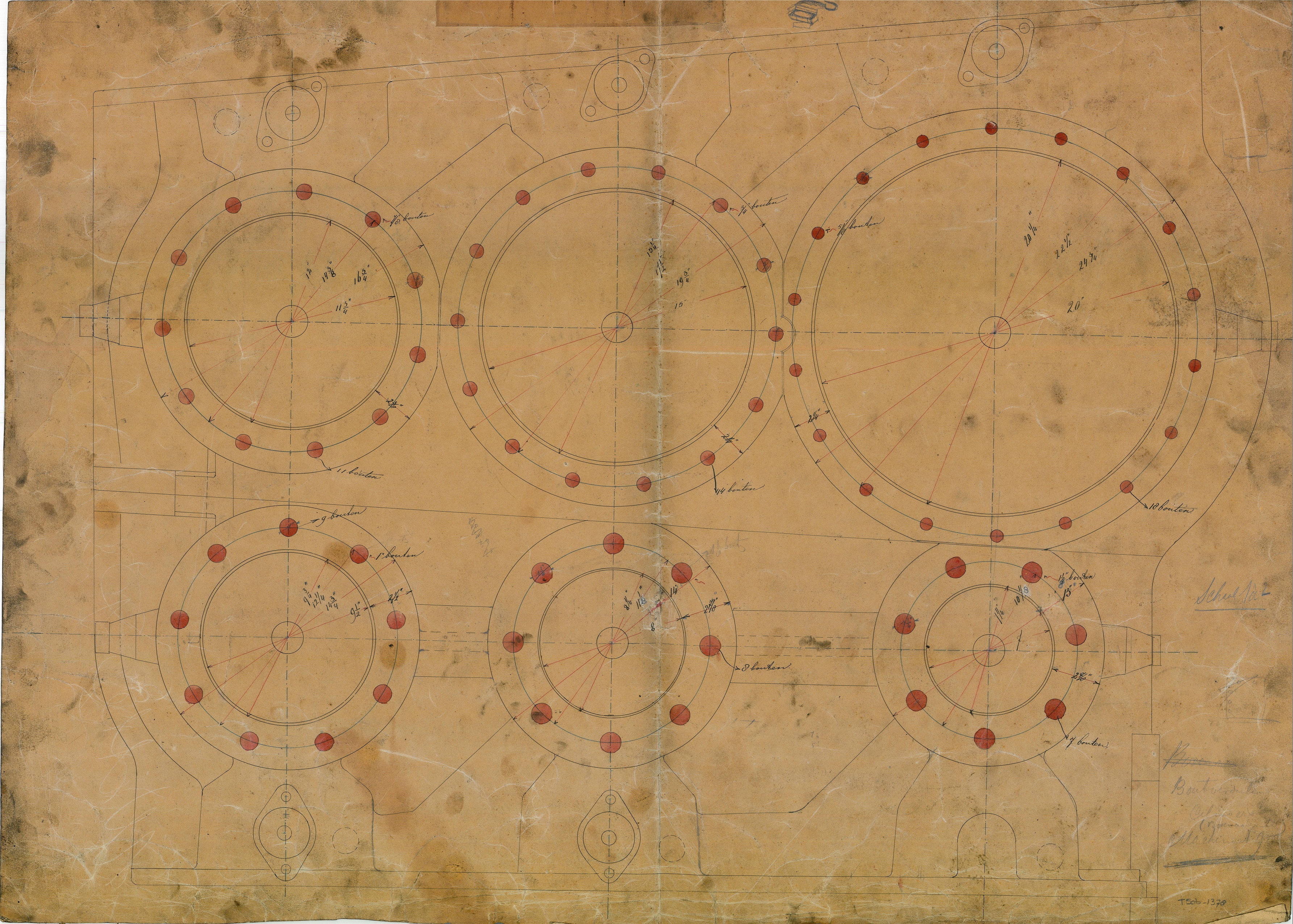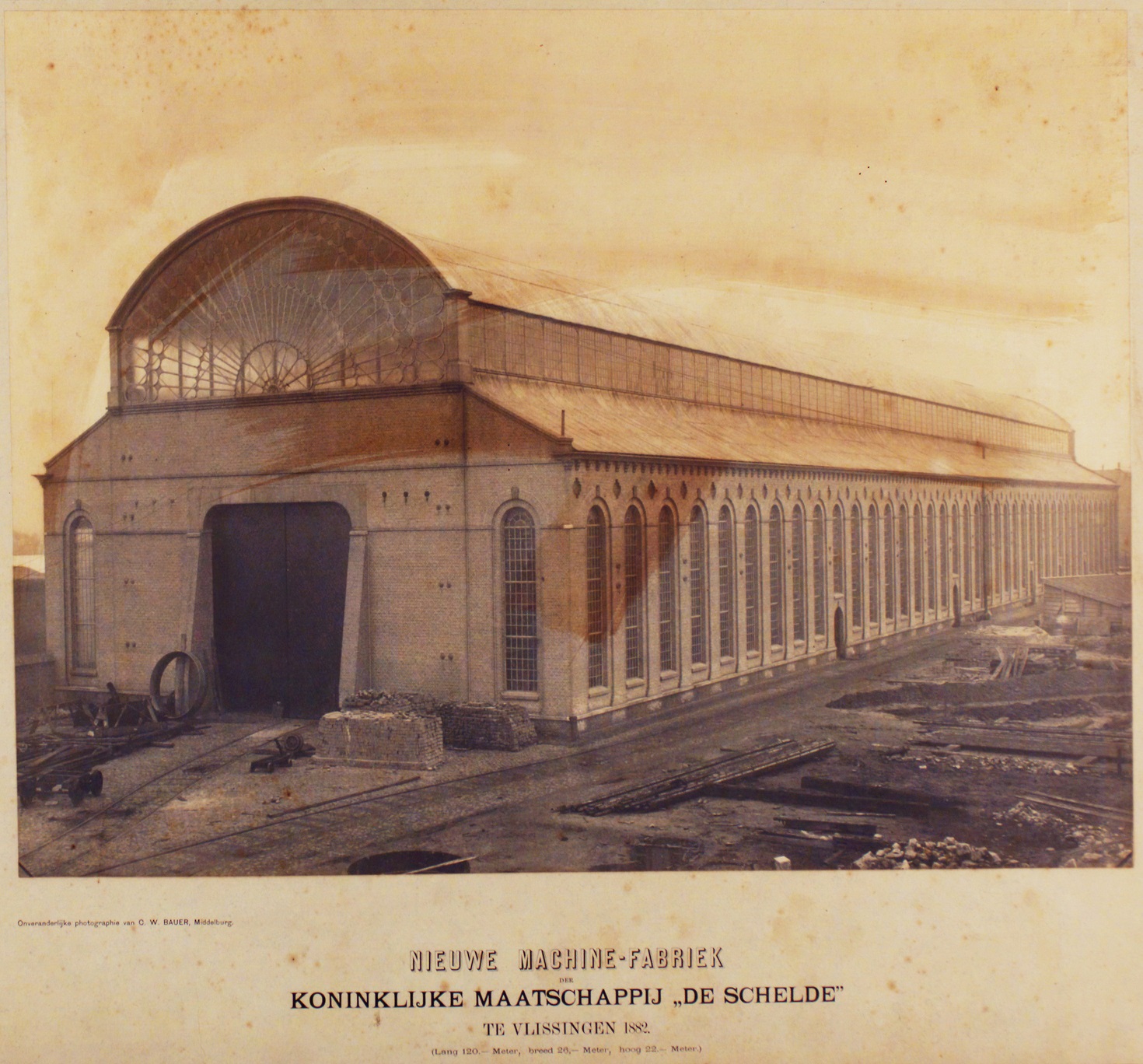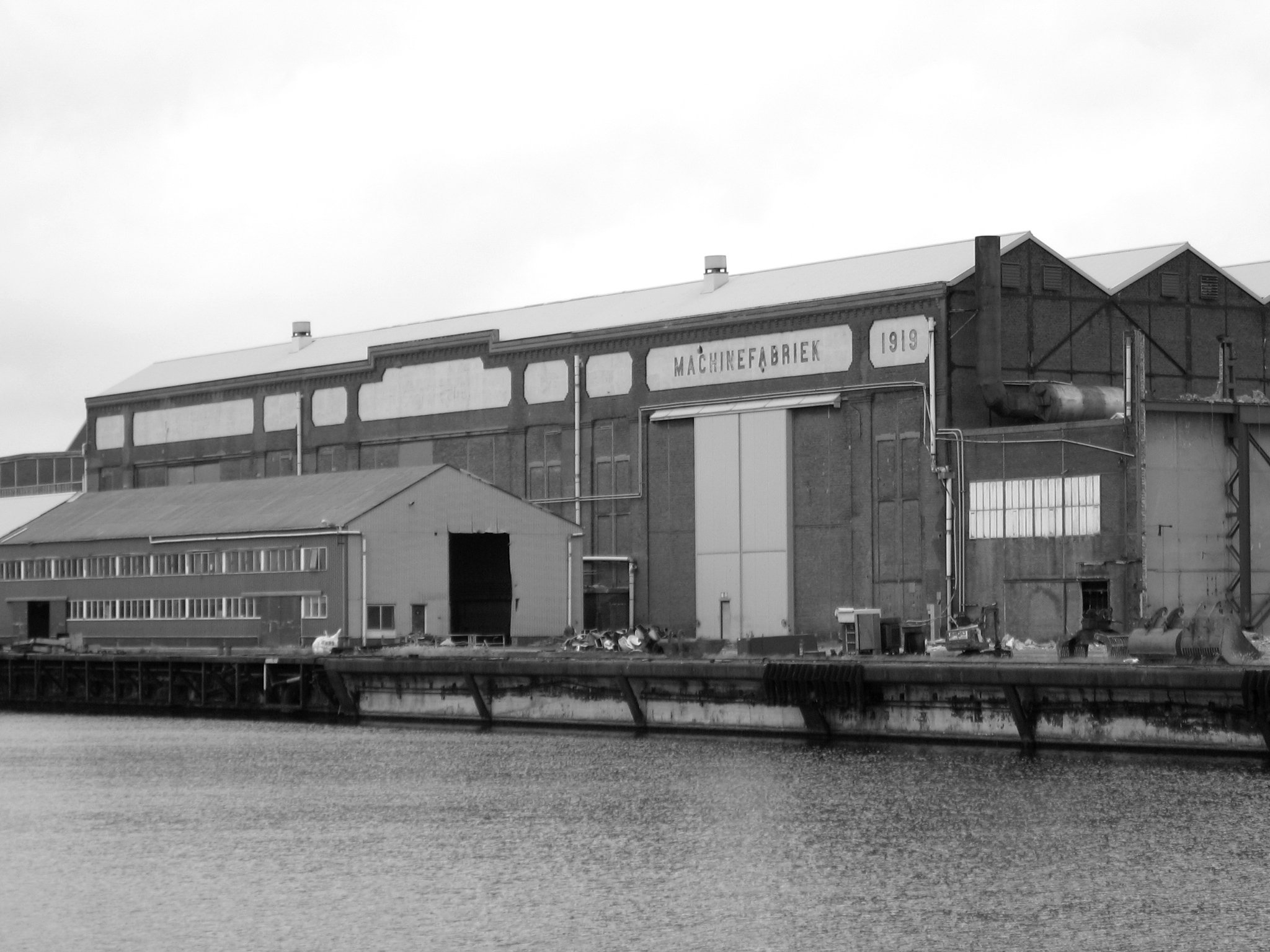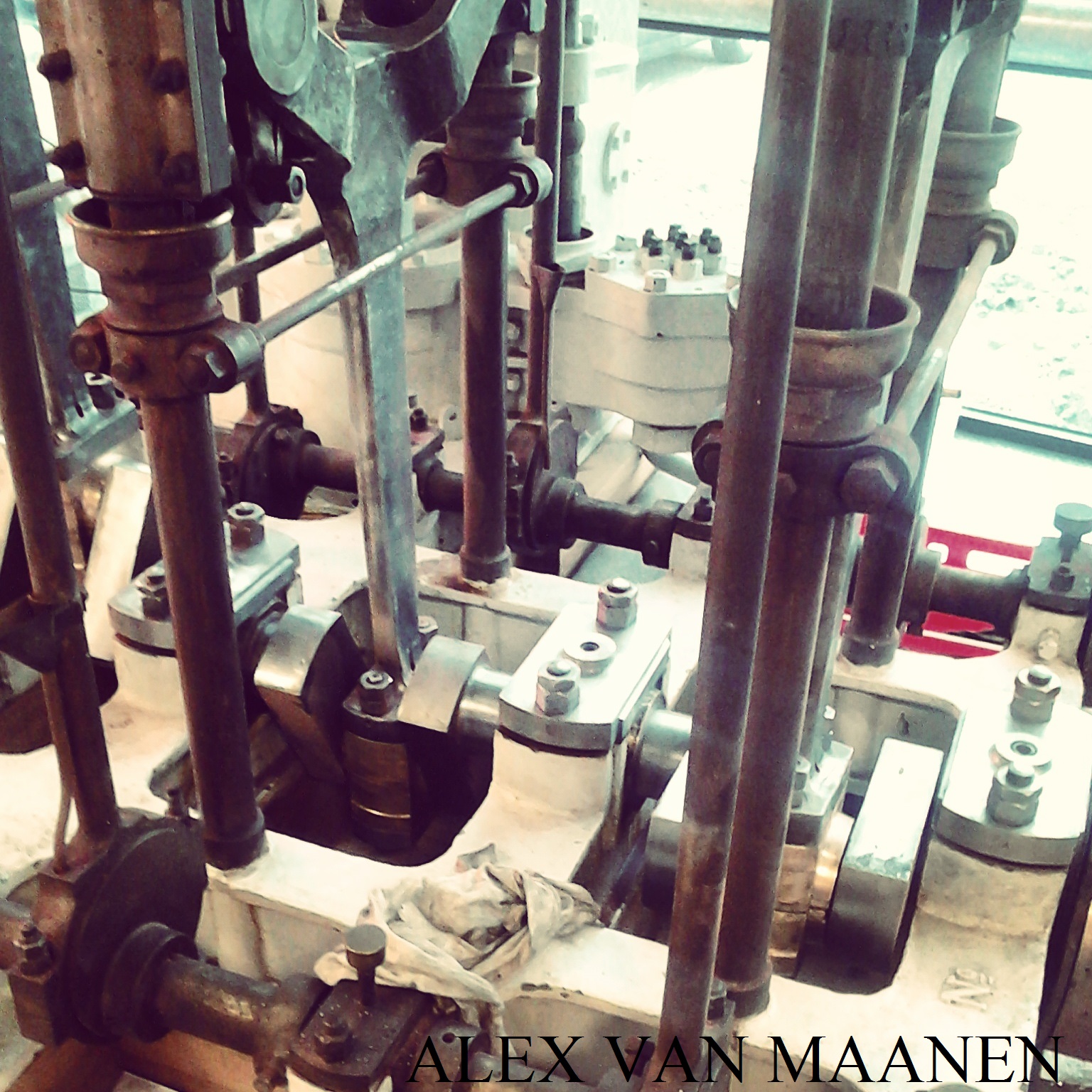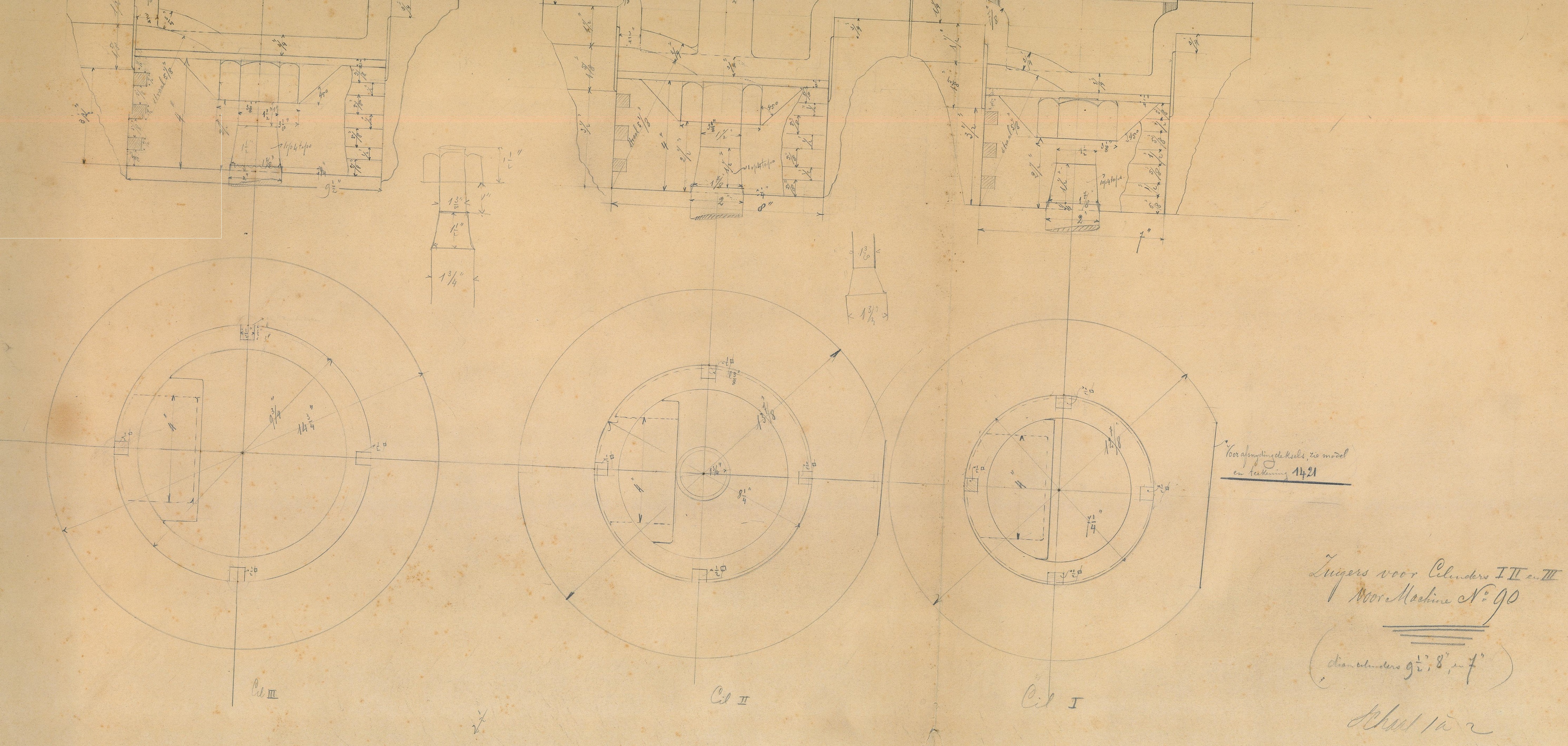In 1875 was atVlissingen,
Netherlands a
shipyard annex machine and boiler plant founded using the area former occupied
by the Royal Dutch Navy as shipyard. The intention was to built ships included
engines and boilers or to deliver at least engines and boilers for ships elsewhere
built. Until the 4th quarter of the 20th century produced
this shipyard Kon.Mij. De Schelde her boilers and engines. Since the 70’s is
she the main shipyard of warships for the Royal Dutch Navy although there also
warships built for other countries like Morocco
and Indonesia.
The archives of the shipyard including more as 100.000
photo’s and several thousands of technical drawings dating from the period 1875-1970
were in the last few years handed over the municipality archive of Vlissingen.
In 2014 were all the preserved drawings of the machine
and boiler plant described and digitized and presented to the internet as Open
Culture Data project. This means that all over the world those high quality drawings
can be downloaded and used for further historical research. Although the
presentation is in Dutch can with the support of a translator the engines and
boilers produced for a ship easily be found back. The link for this project is Machine and boiler plant Vlissingen
The shipyard was for her technical knowledge and
innovations oriented op the United
Kingdom. In fact was the main engineer of
the machine boiler plant the Scottish born engineer William Hamilton Martin
(born Glasgow, Scotland
1850-died at Rotterdam, Netherlands in 1917 but buried at Vlissingen). Being an
orphan he moved to Rotterdam
where he worked in the machine plant of his uncle. He was there specialized in
steam engines for tugs and boilers. Just 25 years old he moved to Vlissingen where he was
appointed as chief engineer at the machine and boiler plant introducing new
techniques and tools. When the building was destroyed, he designed a new
building with many windows for natural light and pillars which also were
transportation steam. His technical knowledge was also used by the town of Vlissingen for instance
for the problems with the steam tram connecting the town with Middelburg. In
1886 he even designed a walking pier, probably to be manufactured by the
shipyard.
Under his supervision were many steam engines and
boilers produced for war- and merchants ships. Orienting on United Kingdom
were for instance water pipe boilers of the Yarrow kind and Parsons turbines
produced. Of course there were triple expansion engines, but also quadruple en
even at least one six triple engine.
The building designed by Martin
The main building with the shed shaped roofs was built between 1912 and 1919 nowadays still exists although no longer used by the shipyard. Photo dated 8 July 2007
On 7 September 1887 received the shipyard the order to
built for account of the river shipping company of Arie Smit (also the founder
of the shipyard) at Slikkerveer,
Netherlands for the steamship Thor VI a steam engine and a boiler for totally ƒ
10.500. The boiler had to have a heating surface of 35 square metres,
a weight of 11.240 kilo
and a pressure of 250 lbs.
Actual costs were ƒ 4.898,62 (stores ƒ 2.703,60, wages ƒ 1.416,22 and 55%
expenses ƒ 778,80). The engine had to be a sixtriple engine (7’8”, 9½”, 11¾”,15”, 20”) to deliver 130 ihp. Actual
costs of the engine ƒ 12.474,50 (stores ƒ 5.880,13, wages ƒ 3.996,24 and 65%
expenses ƒ 2.983,13). In fact became the building a disaster for the shipyard
with a loss of ƒ 6.873,12! The 150hp at 200rpm engine served for many years until 1949 and now the good
news: she still exists nowadays! Fore many years she was placed in the hall of the
main building of the Kon. Mij. De Schelde nowadasy Damen Schelde Naval Shipbuilding until it was handed over to the Zeevaartschool at Vlissingen where future ships
engineers started with the renovation of the engine with the intention to show
in a later stadium with the using of an electric engine instead of steam to
imitate her working.
Main dimensions are 1,6 x 1,3 x 2,2 (height) metres.
The original drawings from 1887 are preserved with notes on it of those who built her. Due to the very worse condition the drawings can not be showed to the public but they will be digitized and probably are available mid January 2015.
To get an impression how she looked in the past and nowadays
see the photo’s. I add also some of the original drawings of the details.
Photo dates probably first quarter20th century
Anno 2014 before the restauration.
The restauration is since then completed and the engine is visible at the technical schooldepartment.
Pistons for the cylinders I-III

